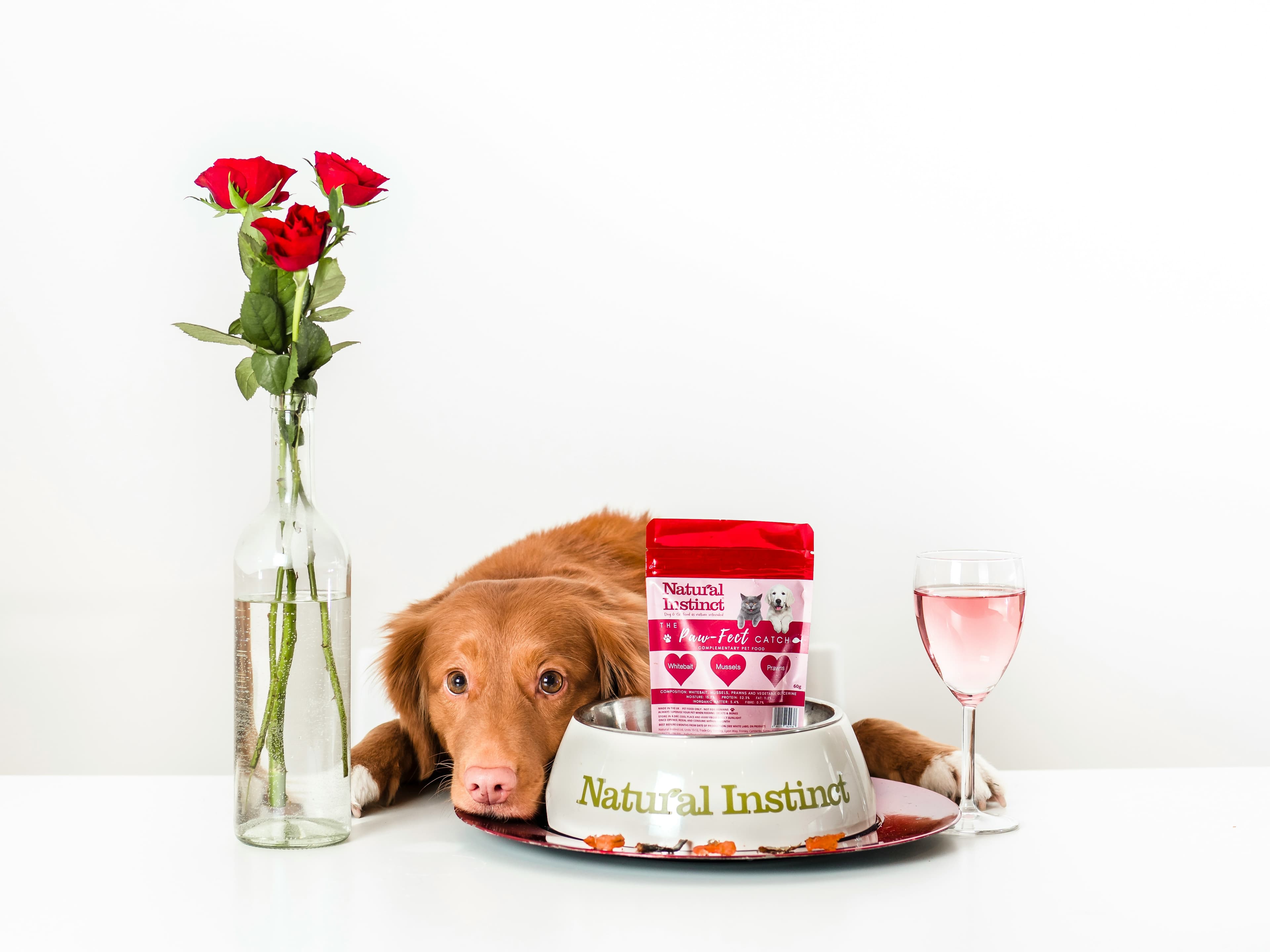The Right Way: Making Your Dog Throw Up

When to Consider Inducing Vomiting in Dogs
Inducing vomiting in dogs is a serious step that should only be taken in specific scenarios. The most common situation is when a dog has ingested a potentially toxic substance. This could include anything from household chemicals like cleaning products, antifreeze, or pesticides, to certain plants that are poisonous to dogs, such as lilies, azaleas, or sago palms. For example, if you spot your dog chewing on a lily leaf and you know lilies are highly toxic to canines, quick action might be necessary.
Another scenario is when a dog has swallowed a non - food item that could cause an obstruction in the digestive tract. Small toys, pieces of fabric, rubber bands, or even bones (especially small, brittle ones) can pose a problem. A small rubber ball that a dog swallows might not pass through the intestines easily and could lead to a blockage, which is a medical emergency. In such cases, getting the object out through induced vomiting could potentially prevent a more serious and invasive surgical procedure later on.
However, it's crucial to note that not all instances of ingestion call for inducing vomiting. Some substances can cause more harm when vomited back up, such as corrosive chemicals. If a dog has ingested something caustic like bleach, inducing vomiting can damage the esophagus and mouth as the substance travels back up. In these situations, it's best to seek immediate veterinary advice without attempting to make the dog vomit at home.
The Risks of Making a Dog Throw Up
While inducing vomiting in dogs can sometimes be a necessary step to prevent further harm from ingested substances, it is not without its risks. One of the primary risks is esophageal damage. When a dog vomits, the forceful expulsion of stomach contents can cause irritation and even abrasion to the delicate lining of the esophagus. If the substance being vomited is acidic, like the contents of the stomach which contain hydrochloric acid, it can lead to a chemical burn of the esophagus. For example, if a dog has ingested a small amount of chocolate and then vomits it back up, the combination of the acidic stomach acid and the potentially caustic nature of the chocolate (due to the theobromine content) can cause the esophagus to become inflamed and damaged. Symptoms of esophageal damage may include excessive drooling, difficulty swallowing, or pain when swallowing, which can be indicated by the dog showing signs of discomfort, such as whining or refusing to eat.
Another significant risk is the development of aspiration pneumonia. This occurs when the dog inhales the vomited material into its lungs. Smaller dogs and those with a short - muzzled (brachycephalic) conformation, such as Bulldogs, Pugs, and Shih Tzus, are at a particularly high risk. Their short airways and the shape of their throats make it easier for vomit to enter the lungs. If a dog inhales vomit, it can cause an infection in the lungs, leading to symptoms like coughing, difficulty breathing, fever, and lethargy. In severe cases, aspiration pneumonia can be life - threatening and may require intensive medical treatment, including hospitalization, oxygen therapy, and antibiotics.
Moreover, if the dog has ingested a sharp object, inducing vomiting can be extremely dangerous. As the object is forced back up through the esophagus, it can puncture or lacerate the esophagus, leading to internal bleeding, infection, or a perforation in the esophageal wall. A small piece of a broken toy or a splintered bone that the dog has swallowed could cause severe damage during the vomiting process. If the esophagus is perforated, food and saliva can leak into the surrounding tissues, leading to a serious and painful condition that often requires immediate surgical intervention.
Safe Methods to Make a Dog Throw Up
Hydrogen Peroxide Method
Hydrogen peroxide is a commonly used and relatively safe option for inducing vomiting in dogs at home, but it must be used with extreme caution. The first step is to ensure you have the right concentration of hydrogen peroxide. The appropriate type for this purpose is 3% hydrogen peroxide, which can be found in most drugstores. Do not use higher - concentration hydrogen peroxide, as it can be extremely harmful to your dog.
The recommended dosage for dogs is 1 teaspoon (5 ml) per 5 pounds of body weight. For example, if your dog weighs 20 pounds, you would give it 4 teaspoons (20 ml) of 3% hydrogen peroxide. You can administer the hydrogen peroxide using a syringe (without the needle, of course) or a dropper. Gently place the tip of the syringe or dropper in the side of your dog's mouth, towards the back of the cheek, and slowly dispense the liquid. Try to avoid getting the hydrogen peroxide into the dog's windpipe, as this can cause choking or aspiration.
After administering the hydrogen peroxide, it's a good idea to gently walk your dog around. This gentle exercise can help stimulate the stomach and may increase the likelihood of vomiting. In many cases, the dog will start to vomit within 10 - 15 minutes. However, if your dog does not vomit after 15 minutes, do not give a second dose of hydrogen peroxide. Re - dosing can lead to an overdose and potential toxicity. If vomiting does not occur after the first dose, contact your veterinarian immediately for further advice.
Syrup of Ipecac
Syrup of ipecac is another option for inducing vomiting in dogs, but it is not as commonly used today as it once was due to some potential risks. Syrup of ipecac works by irritating the lining of the stomach, which in turn triggers the vomiting reflex.
The dosage of syrup of ipecac for dogs is typically 1 - 2 teaspoons (5 - 10 ml) for small dogs (under 20 pounds) and 2 - 3 teaspoons (10 - 15 ml) for larger dogs. It should be given orally, similar to the way hydrogen peroxide is administered.
Syrup of ipecac is best used in cases where the dog has ingested a non - corrosive and non - sharp object or a non - life - threatening toxic substance, and veterinary advice cannot be obtained immediately. However, it has some potential side effects. One of the main concerns is that it can cause excessive vomiting, which can lead to dehydration, electrolyte imbalances, and damage to the esophagus. Additionally, in some rare cases, it may not work as expected, and the dog may still retain the ingested substance. It's important to note that if the dog has ingested a caustic substance, a sharp object, or a large amount of a potentially lethal toxin, syrup of ipecac should not be used, and immediate veterinary care should be sought.
Precautions Before Inducing Vomiting
Contact Your Vet First
Before you even think about making your dog throw up, it is absolutely essential to contact your veterinarian. Veterinarians are trained professionals with in - depth knowledge of canine physiology and the effects of various substances on dogs. They can provide you with accurate advice based on the specific situation. For instance, if you tell your vet that your dog has ingested a certain amount of a particular plant, they can quickly determine whether inducing vomiting is the right course of action. They may also be able to tell you if the substance will likely pass through the digestive system safely or if it requires more immediate intervention. Sometimes, the vet may recommend bringing the dog in for an examination instead of attempting to induce vomiting at home. This is especially true if the dog has underlying health conditions or if the ingested substance is very dangerous. By consulting your vet first, you can avoid making a potentially harmful mistake.
Know Your Dog's Condition
Understanding your dog's health condition, age, and weight is crucial when considering inducing vomiting. A dog's age can significantly impact how it responds to the process of vomiting. Puppies, for example, have more delicate digestive systems and are more vulnerable to the risks associated with induced vomiting, such as esophageal damage and dehydration. Their bodies may not be able to handle the stress of forcefully expelling stomach contents as well as adult dogs.
Weight is also a vital factor. The dosage of substances like hydrogen peroxide or syrup of ipecac used to induce vomiting is calculated based on the dog's weight. Giving an incorrect dosage can lead to serious problems. If you give too much of these substances to a small dog, it can cause an overdose, which may result in toxicity, excessive vomiting, or other life - threatening conditions. On the other hand, giving too little may not be effective in inducing vomiting.
Moreover, if your dog has pre - existing health conditions such as heart problems, respiratory issues, or a weakened immune system, inducing vomiting can pose additional risks. For a dog with a heart condition, the physical stress of vomiting could potentially trigger a heart - related episode. Dogs with respiratory problems may be more likely to develop aspiration pneumonia if they vomit. Therefore, having a full understanding of your dog's health profile is essential before attempting to make it throw up.
What to Do After Your Dog Throws Up
Observe Your Dog
After your dog throws up, it's crucial to closely observe its behavior and overall condition. Start by looking at its energy levels. A dog that is still active, wagging its tail, and showing normal interest in its surroundings is generally a good sign. However, if your dog seems lethargic, unresponsive, or is lying in a corner and not moving much, it could indicate a more serious problem. For example, a normally energetic Labrador Retriever that just lies down and doesn't even get up to greet you after vomiting may be in distress.
Pay attention to its appetite as well. If your dog shows some interest in food shortly after vomiting, it might mean that the issue was a minor one, like eating too quickly. On the other hand, a complete lack of appetite, especially if it persists for more than a few hours, can be concerning. Some dogs may even turn their noses up at their favorite treats, which is a clear deviation from their normal behavior.
Also, monitor your dog's drinking habits. Dehydration can set in quickly after vomiting, so a dog that is still willing to drink small amounts of water is a positive sign. But if it refuses water altogether, it's a red flag. Check for signs of excessive thirst, such as constantly licking its lips or searching for water sources, as this could also be a sign that the body is trying to compensate for fluid loss.
Provide Proper Care
Once you've observed your dog, it's time to provide the necessary care. First and foremost, offer your dog small sips of water. You can use a syringe or a small bowl to give it water in small, frequent intervals. This helps to prevent further vomiting that could be caused by drinking too much water too quickly. For example, give your dog about 1 - 2 tablespoons of water every 15 - 20 minutes. If your dog can keep the water down for an hour or two, you can gradually increase the amount.
Next, give your dog a quiet and comfortable place to rest. A soft bed or a cozy corner with a blanket can provide a sense of security. Minimize noise and distractions to allow your dog to relax and recover. Stress can exacerbate an upset stomach, so creating a calm environment is essential.
In terms of food, if your dog vomited due to overeating or eating something that didn't agree with it, it's best to wait for a few hours before offering any food. A general guideline is to wait at least 6 - 8 hours after the last episode of vomiting. When you do start to feed your dog again, offer a small amount of a bland, easily digestible food. Boiled chicken and rice is a classic option. The chicken provides protein, and the rice is gentle on the stomach. Start with a very small portion, about a quarter - cup for a small dog or half - cup for a medium - sized dog, and gradually increase the amount over the next few meals if your dog tolerates it well. If your dog has a history of food allergies or sensitivities, consult your veterinarian for advice on suitable bland foods.
Conclusion
In conclusion, knowing how to make a dog throw up can be a valuable skill for dog owners in certain emergency situations. However, it is a procedure that should be approached with extreme caution. Only consider inducing vomiting when your dog has ingested a potentially harmful substance or object, and always consult your veterinarian first. Be aware of the risks involved, such as esophageal damage, aspiration pneumonia, and injury from sharp objects.
If you do decide to use a method like hydrogen peroxide or syrup of ipecac, make sure to follow the correct dosage and administration guidelines precisely. After your dog throws up, closely observe its behavior, energy levels, appetite, and drinking habits, and provide appropriate care, including small sips of water, a quiet place to rest, and a proper diet adjustment. Remember, the well - being of your furry friend is of utmost importance, and when in doubt, the best course of action is to seek professional veterinary help.




